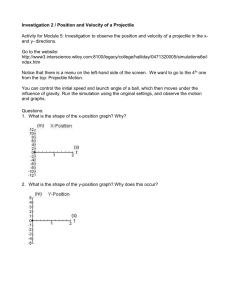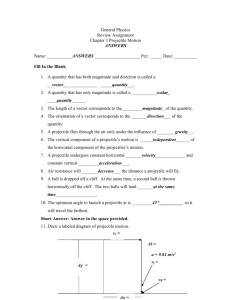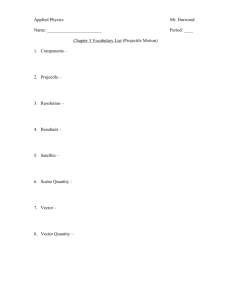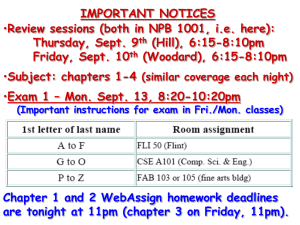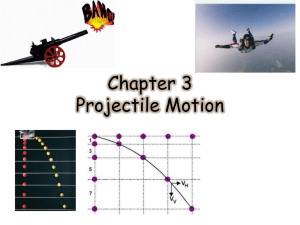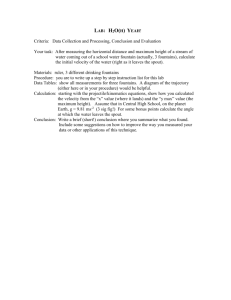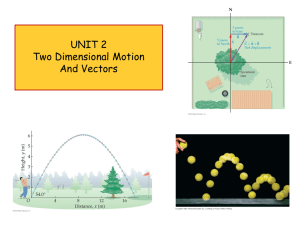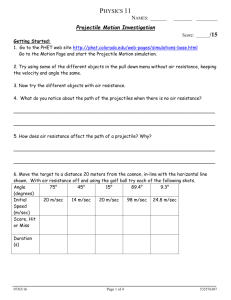Conceptual Physics 2-D Kinematics Practice Test O`Brien
advertisement
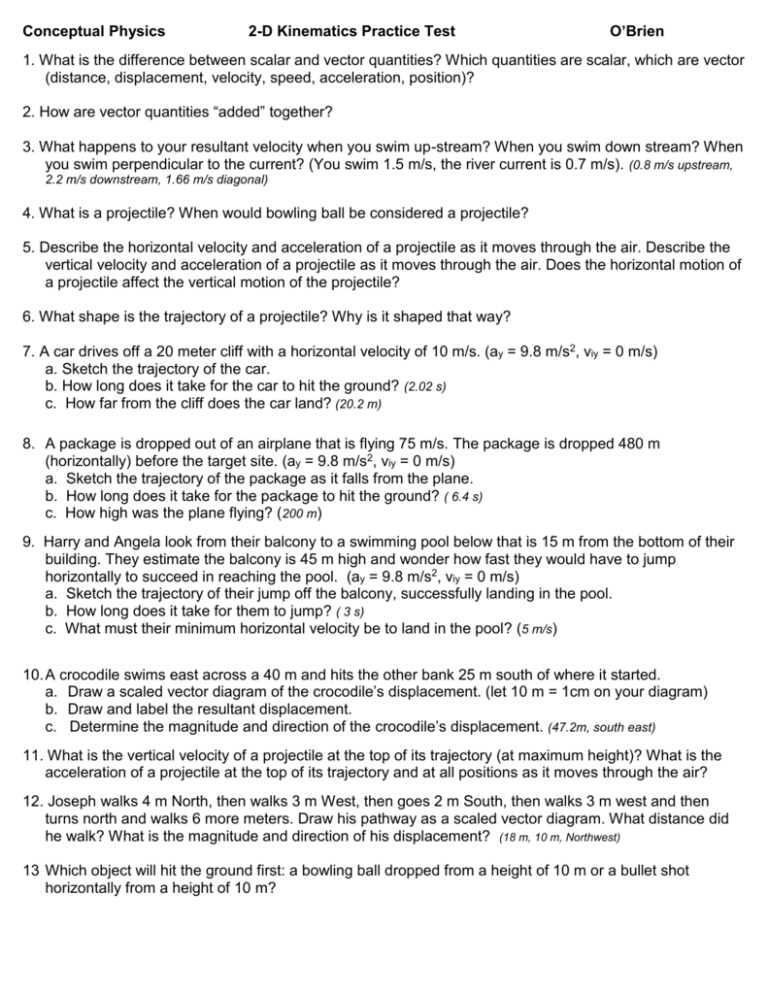
Conceptual Physics 2-D Kinematics Practice Test O’Brien 1. What is the difference between scalar and vector quantities? Which quantities are scalar, which are vector (distance, displacement, velocity, speed, acceleration, position)? 2. How are vector quantities “added” together? 3. What happens to your resultant velocity when you swim up-stream? When you swim down stream? When you swim perpendicular to the current? (You swim 1.5 m/s, the river current is 0.7 m/s). (0.8 m/s upstream, 2.2 m/s downstream, 1.66 m/s diagonal) 4. What is a projectile? When would bowling ball be considered a projectile? 5. Describe the horizontal velocity and acceleration of a projectile as it moves through the air. Describe the vertical velocity and acceleration of a projectile as it moves through the air. Does the horizontal motion of a projectile affect the vertical motion of the projectile? 6. What shape is the trajectory of a projectile? Why is it shaped that way? 7. A car drives off a 20 meter cliff with a horizontal velocity of 10 m/s. (ay = 9.8 m/s2, viy = 0 m/s) a. Sketch the trajectory of the car. b. How long does it take for the car to hit the ground? (2.02 s) c. How far from the cliff does the car land? (20.2 m) 8. A package is dropped out of an airplane that is flying 75 m/s. The package is dropped 480 m (horizontally) before the target site. (ay = 9.8 m/s2, viy = 0 m/s) a. Sketch the trajectory of the package as it falls from the plane. b. How long does it take for the package to hit the ground? ( 6.4 s) c. How high was the plane flying? (200 m) 9. Harry and Angela look from their balcony to a swimming pool below that is 15 m from the bottom of their building. They estimate the balcony is 45 m high and wonder how fast they would have to jump horizontally to succeed in reaching the pool. (ay = 9.8 m/s2, viy = 0 m/s) a. Sketch the trajectory of their jump off the balcony, successfully landing in the pool. b. How long does it take for them to jump? ( 3 s) c. What must their minimum horizontal velocity be to land in the pool? (5 m/s) 10. A crocodile swims east across a 40 m and hits the other bank 25 m south of where it started. a. Draw a scaled vector diagram of the crocodile’s displacement. (let 10 m = 1cm on your diagram) b. Draw and label the resultant displacement. c. Determine the magnitude and direction of the crocodile’s displacement. (47.2m, south east) 11. What is the vertical velocity of a projectile at the top of its trajectory (at maximum height)? What is the acceleration of a projectile at the top of its trajectory and at all positions as it moves through the air? 12. Joseph walks 4 m North, then walks 3 m West, then goes 2 m South, then walks 3 m west and then turns north and walks 6 more meters. Draw his pathway as a scaled vector diagram. What distance did he walk? What is the magnitude and direction of his displacement? (18 m, 10 m, Northwest) 13 Which object will hit the ground first: a bowling ball dropped from a height of 10 m or a bullet shot horizontally from a height of 10 m?


